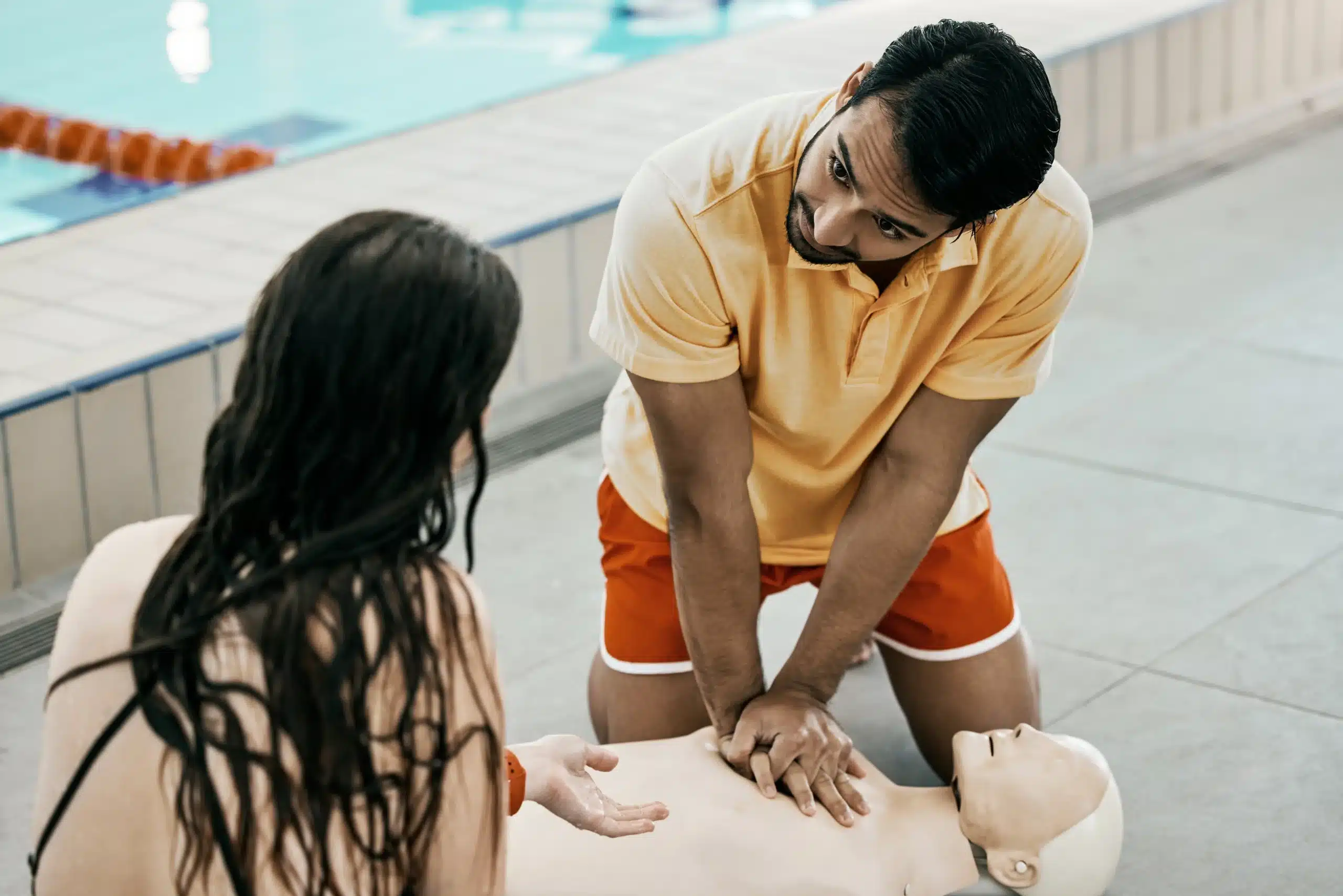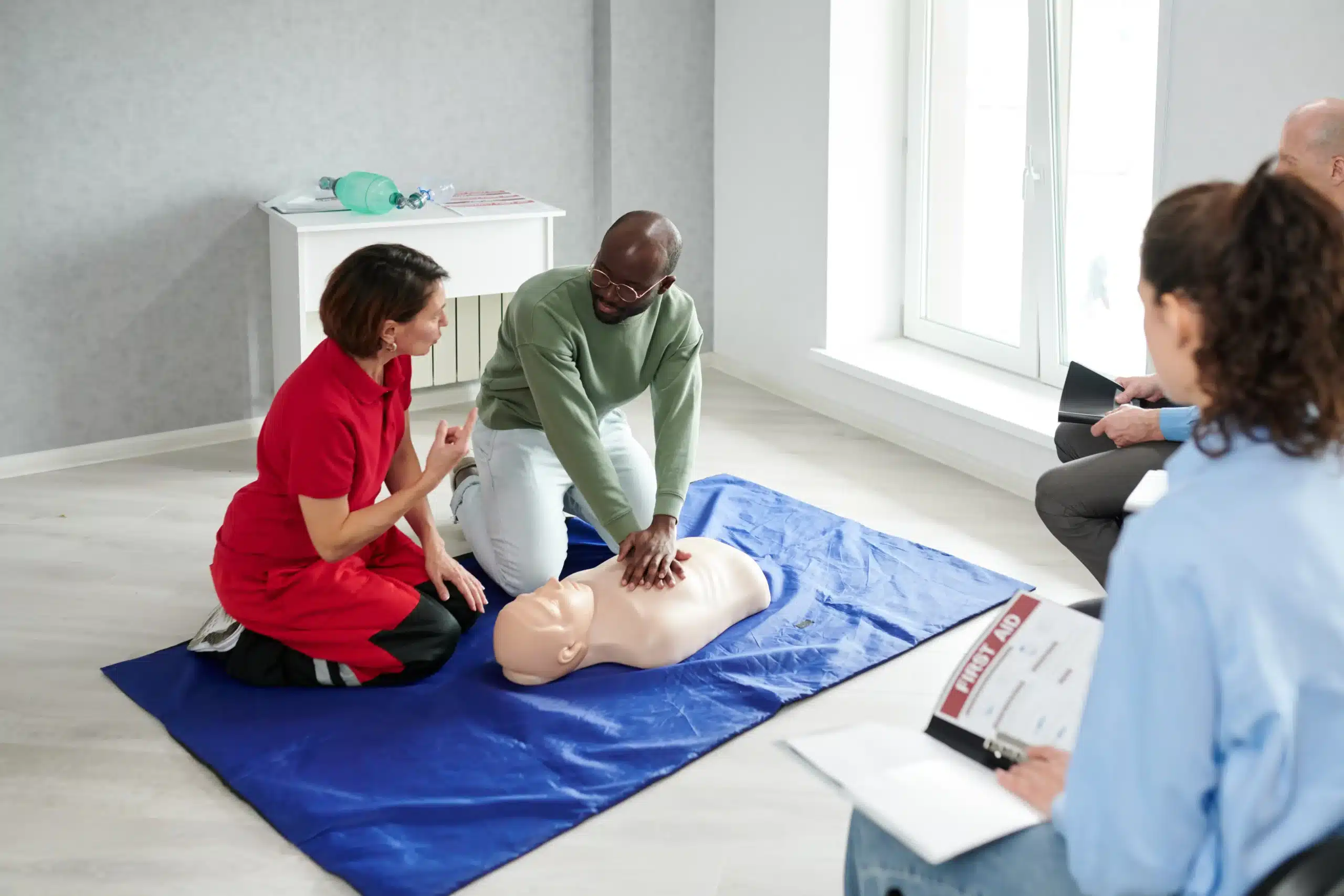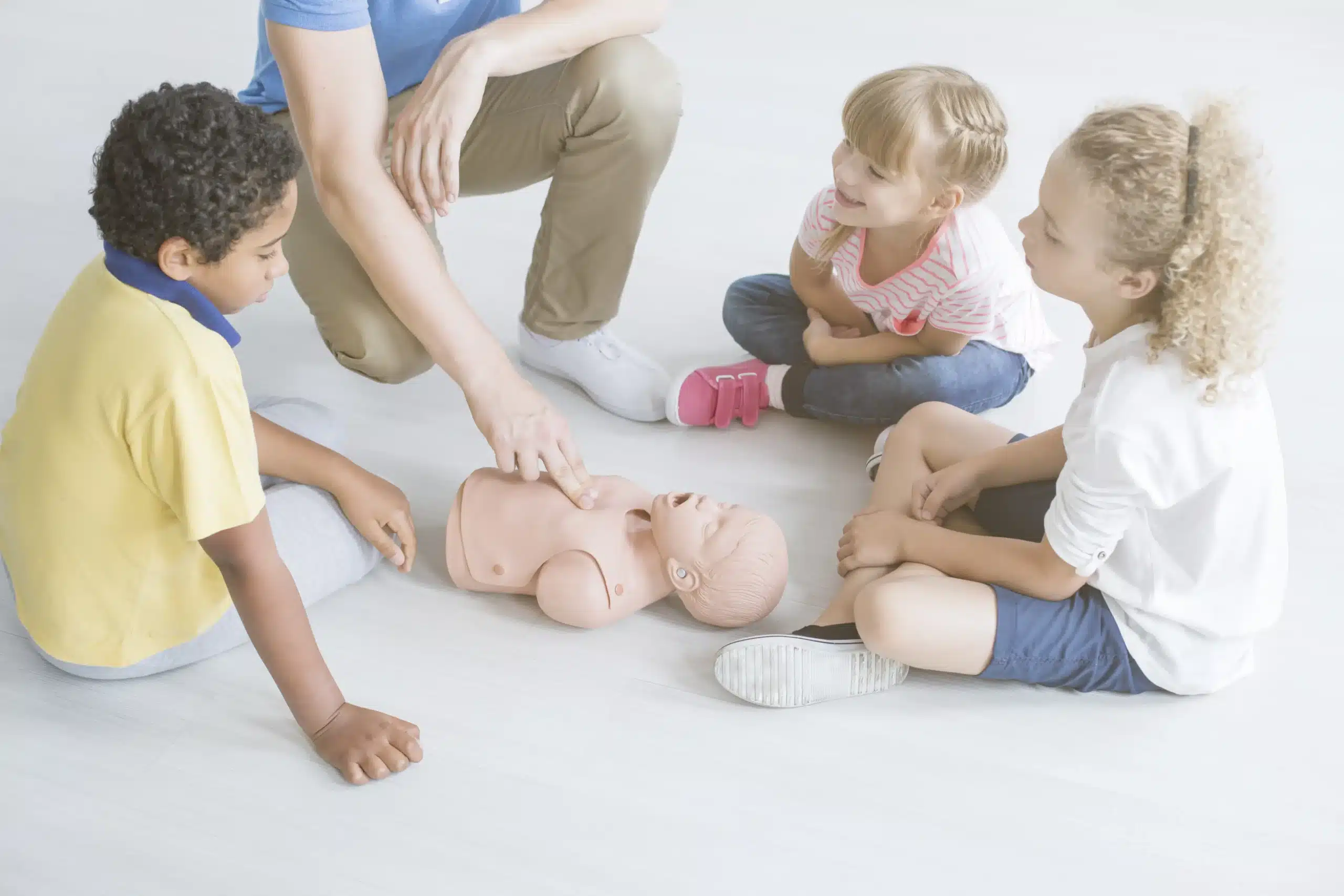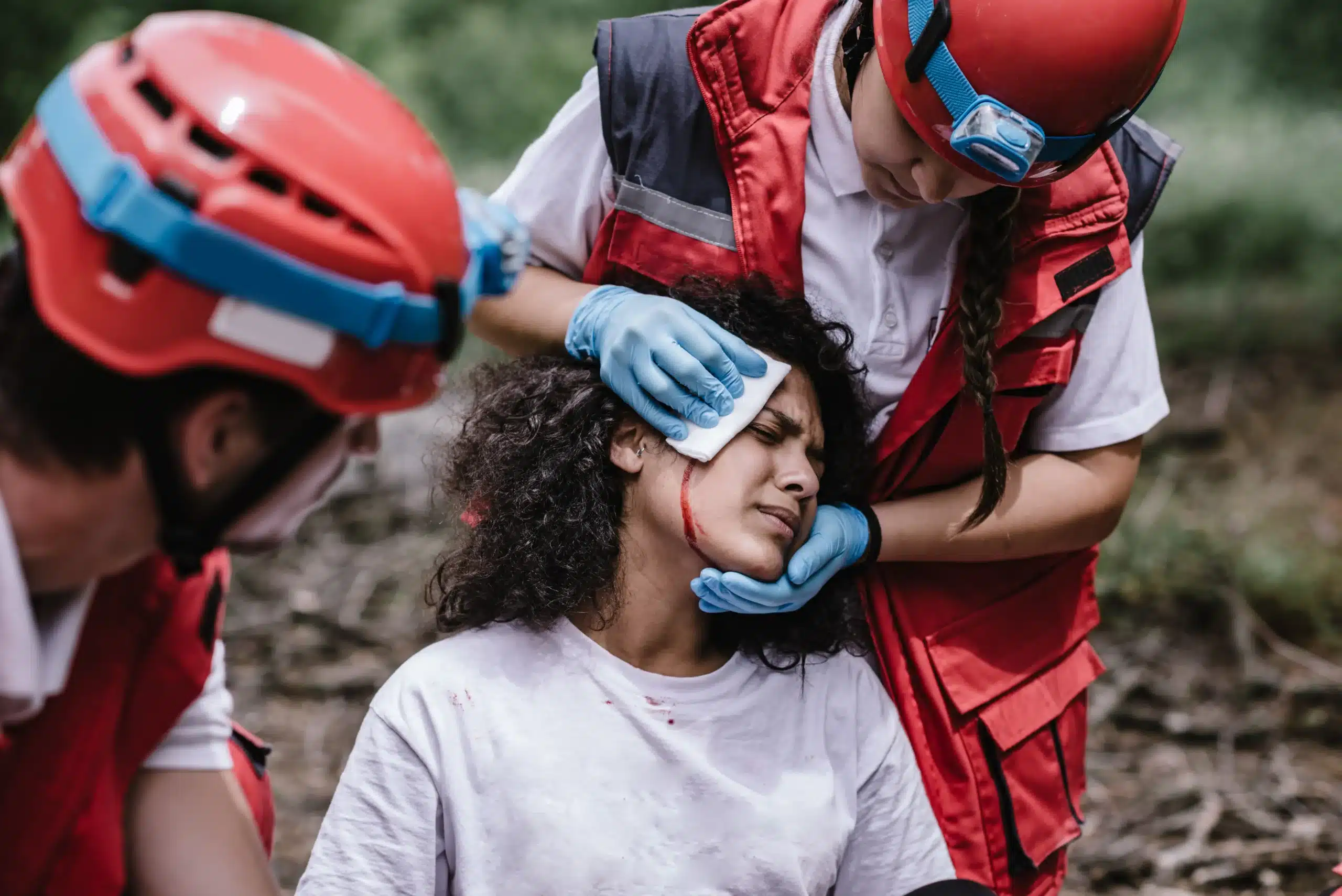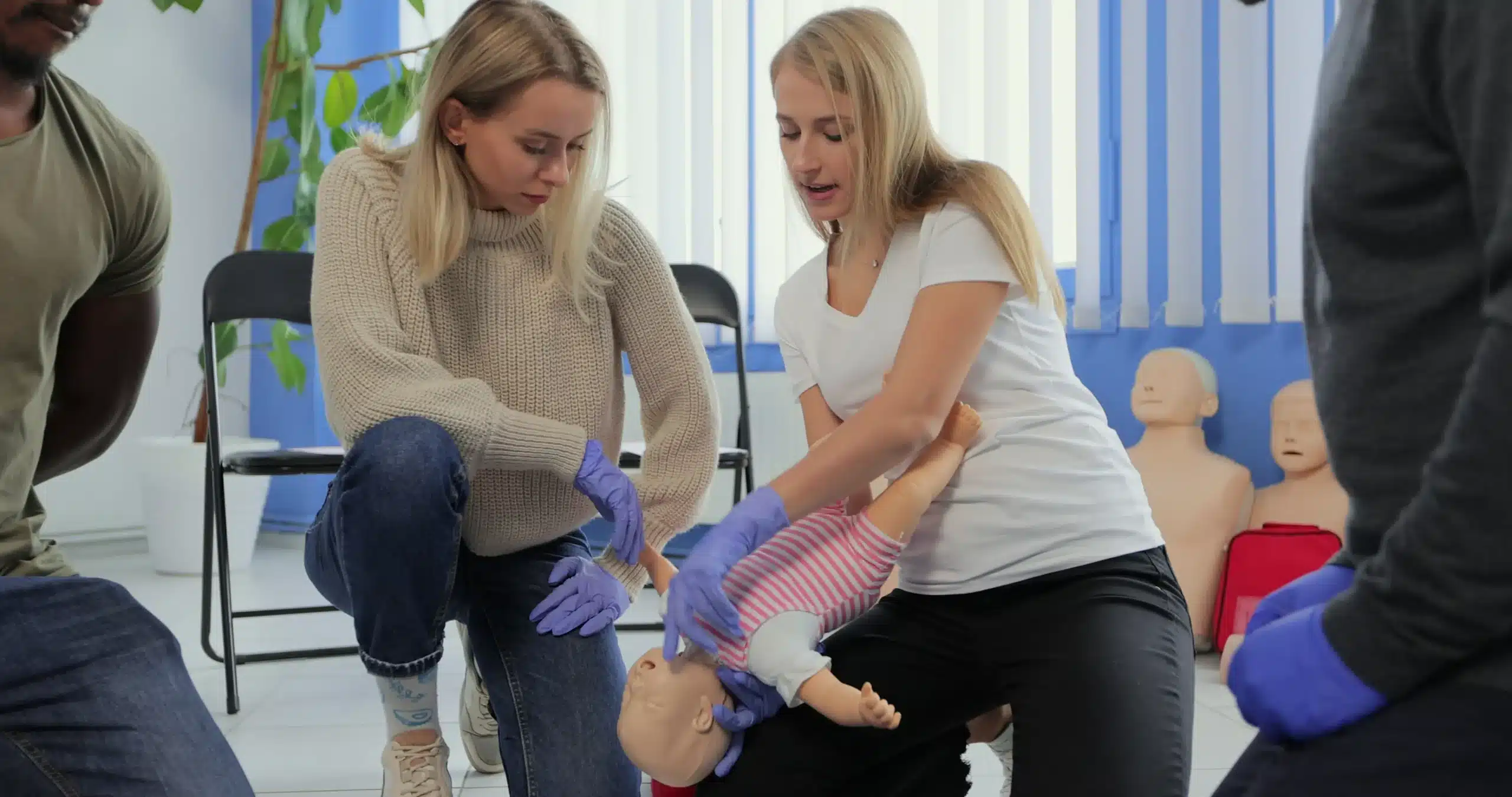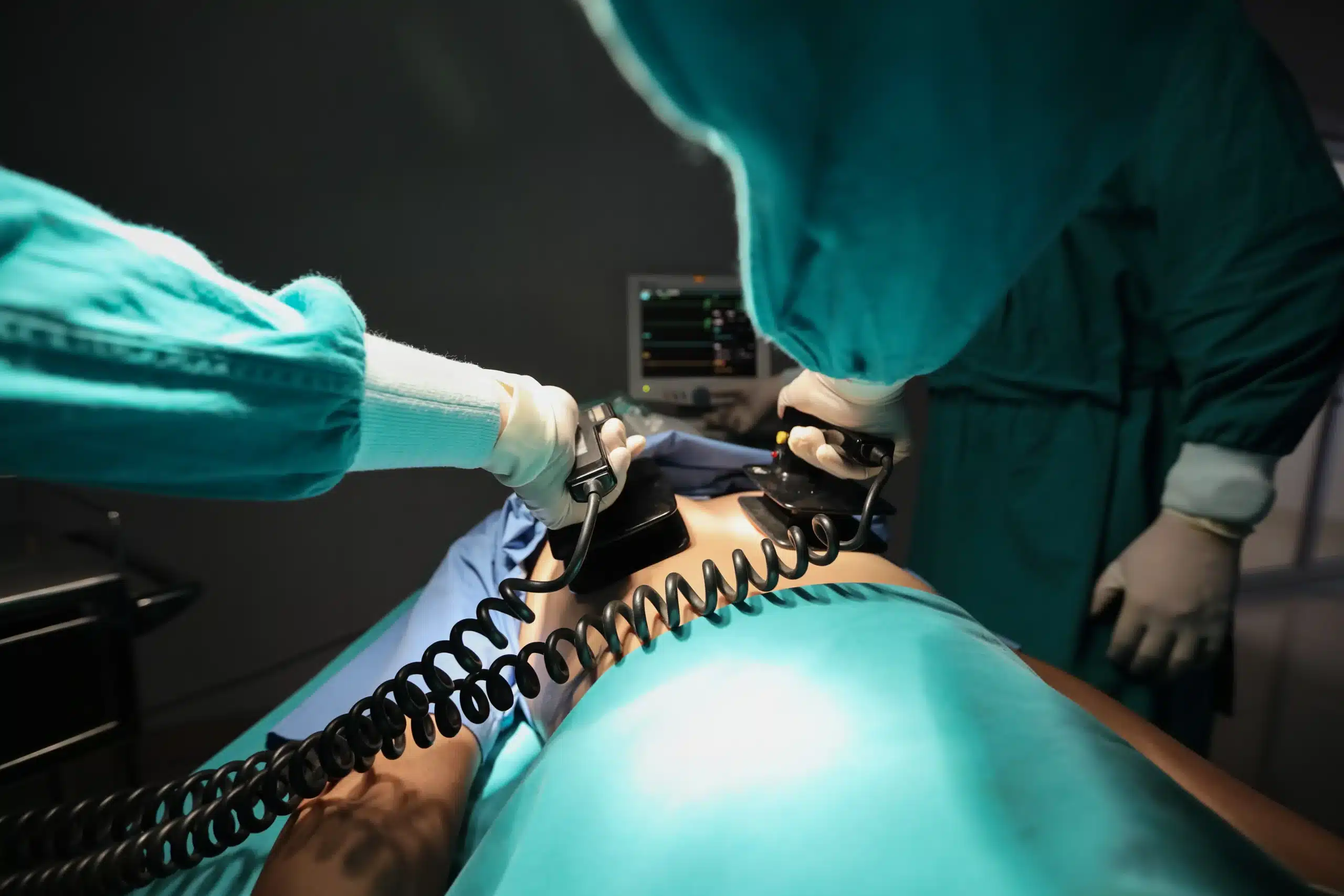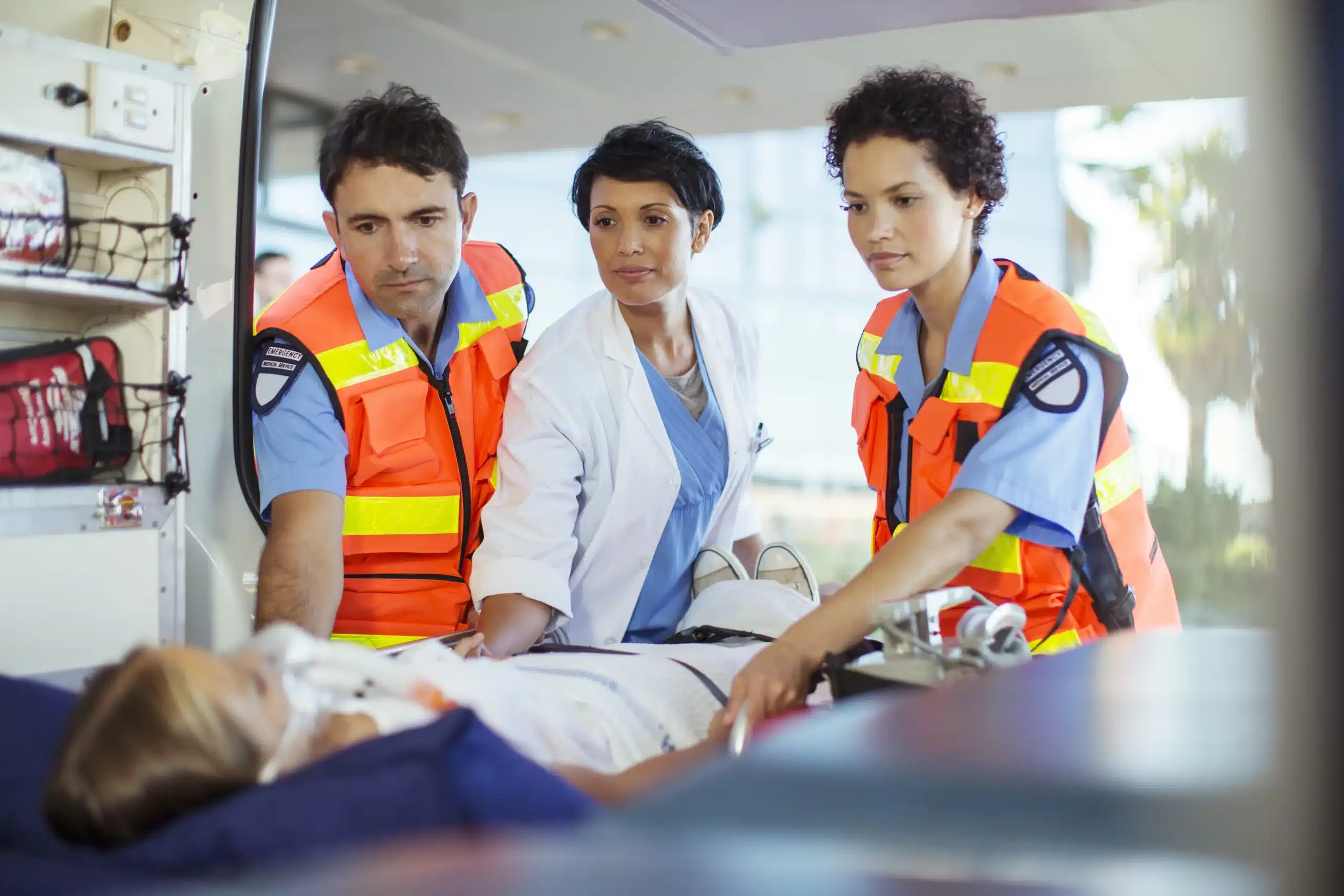Emergencies can happen anytime, anywhere. Would you know what to do if someone suddenly collapsed or a child started choking? CPR and first-aid training equips you with the skills to respond effectively in these critical situations. This comprehensive guide explores the world of CPR and First-aid courses in Livermore, covering everything from basic life support to advanced cardiac care. We’ll delve into the different types of courses available, where to find training in Livermore, the benefits of certification, and how to maintain your skills. Whether you’re a healthcare professional, childcare provider, or simply someone who wants to be prepared, this article will provide valuable insights into the importance of CPR and first-aid training.
Key Takeaways
- CPR and first aid are essential skills for everyone: Learning these skills empowers you to confidently handle medical emergencies and potentially save lives. Find a course that fits your needs and schedule, whether you’re a parent, teacher, or healthcare provider.
- Safety Training Seminars offers a variety of CPR and first-aid courses in Livermore: As an AHA Training Center, they provide high-quality instruction and nationally recognized certifications. Explore their flexible learning options and group discounts.
- Stay current with your training: CPR and first-aid guidelines are regularly updated. Renew your certification every two years and consider continuing education opportunities to maintain your skills and confidence.
What is CPR and First Aid?
CPR and first aid are essential life skills that can make a real difference in emergencies. Let’s break down what each one involves:
CPR, or cardiopulmonary resuscitation, is a lifesaving technique used when someone’s breathing or heartbeat has stopped. This can happen due to a heart attack, drowning, or other life-threatening events. CPR involves chest compressions and rescue breaths. The chest compressions help circulate blood to vital organs, and rescue breaths provide much-needed oxygen. The goal is to keep the person alive until paramedics or other trained medical professionals arrive. It’s worth noting that there are several misconceptions about CPR—this article on common CPR myths sets the record straight.
First aid is the immediate care you give someone who’s been injured or suddenly taken ill. This can range from treating minor cuts and scrapes to handling more serious situations like broken bones or allergic reactions. The aim of first aid is to stabilize the person and prevent further harm until they can get professional medical attention. Like CPR, first aid is sometimes misunderstood. This article on first aid myths clears up some common misconceptions.
Having training in both CPR and first aid gives you a strong foundation for responding effectively to emergencies. It empowers you to take action and potentially save a life.
CPR and First-Aid Courses in Livermore
We offer a variety of CPR and first-aid courses in Livermore to meet the needs of healthcare providers, childcare professionals, and the general public. Whether you’re a medical student, teacher, or parent, we have a course that’s right for you.
Basic Life Support (BLS)
Our BLS certification course is designed for healthcare professionals, first responders, and anyone who wants to learn how to perform high-quality CPR. This course covers essential skills such as chest compressions, airway management, and recognizing the signs of a medical emergency. You’ll learn how to respond effectively in critical situations and provide life-saving care.
Advanced Cardiac Life Support (ACLS)
The ACLS course is an advanced-level training program for healthcare providers who manage cardiovascular emergencies. This certification covers topics such as stroke recognition, cardiac arrest management, and advanced resuscitation techniques. It’s crucial for professionals working in emergency rooms, intensive care units, and other critical care settings.
Pediatric Advanced Life Support (PALS)
PALS training focuses on the specific needs of infants and children experiencing medical emergencies. This course equips healthcare providers with the skills to manage pediatric respiratory problems and perform advanced resuscitation techniques tailored for young patients. It’s essential for anyone working in pediatrics, neonatal care, or emergency medicine.
First Aid Training
Our comprehensive first-aid course teaches essential life-saving skills. You’ll learn CPR for adults, children, and infants, as well as how to relieve choking and manage injuries like burns and fractures. The course also covers how to use an Automated External Defibrillator (AED).
EMSA Child Care Health & Safety
Specifically designed for childcare providers, the EMSA Child Care Health & Safety training covers essential health and safety practices for childcare settings. This course ensures caregivers are prepared to create and maintain a safe environment for the children in their care. Topics include preventing injuries, managing illnesses, and responding to emergencies.
Where to Get CPR and First-Aid Training in Livermore
Finding the right CPR and first-aid training program is crucial for developing the skills and confidence to handle emergencies. Here are some reputable options in Livermore:
Safety Training Seminars
Safety Training Seminars in Livermore offers a range of American Heart Association (AHA) courses, including BLS, ACLS, PALS, CPR, and first-aid. They also provide EMSA Child Care Health & Safety training and group discounts. With a commitment to excellent customer service and competitive pricing, they are a popular local choice. Certifications are valid for two years. Learn more about their CPR and first-aid courses.
CPR Education
CPR Education offers comprehensive CPR and first-aid training in Livermore and the surrounding areas. Certified by the AHA, they deliver high-quality instruction for individuals, families, businesses, and organizations. Find a class that meets your specific needs.
Bay Area CPR
Bay Area CPR partners with Safety Training Seminars to offer several AHA-compliant courses, including BLS, ACLS, PALS, and CPR/first-aid. This partnership ensures their training reflects the latest standards in emergency care. Explore their courses and find the right fit.
American Heart Association
The American Heart Association sets the standard for CPR and first-aid training. Developed by medical experts, their programs teach effective, up-to-date techniques. Safety Training Seminars, an authorized AHA Training Center in Livermore, offers convenient access to these essential courses.
Red Cross
The Red Cross provides various CPR and first-aid courses, including Pediatric First Aid/CPR/AED. Participants receive a two-year digital certification upon completion. Review their Pediatric First Aid/CPR/AED fact sheet for additional information.
Benefits of CPR and First-Aid Training
Knowing how to respond to medical emergencies can make all the difference. CPR and first-aid training empowers you to act quickly and effectively when every second counts. Here’s a closer look at the key advantages of becoming certified:
AHA Certification and Recognition
Our courses meet American Heart Association (AHA) guidelines, providing you with a nationally recognized certification. This ensures your qualifications are widely accepted and demonstrates your commitment to high-quality training. Safety Training Seminars is an official AHA Training Center, so you can trust the validity and credibility of your certification. Your card will be valid for two years.
Expert Instruction
At Safety Training Seminars, you’ll learn from experienced instructors who are passionate about teaching these life-saving skills. They create a supportive learning environment where you can ask questions and feel comfortable practicing. Our instructors guide you through each step, ensuring you gain the confidence to apply your knowledge in real-world situations.
Hands-on Practice
We believe that hands-on learning is essential for mastering CPR and first aid. Our courses incorporate interactive demonstrations, practice sessions with manikins and other equipment, and group discussions to reinforce key concepts. This practical approach helps you develop muscle memory and the ability to respond effectively under pressure.
Flexible Learning
We understand that busy schedules can make it challenging to fit in training. That’s why we offer flexible learning options, including our innovative RQI program. RQI combines online learning with in-person skills testing, allowing you to complete the online portion at your own pace and then demonstrate your proficiency in a hands-on session. The online portion lets you work through the material whenever it’s convenient.
Confidence in Emergencies
Perhaps the most significant benefit of CPR and first-aid training is the confidence it instills. Knowing you have the skills to help someone in a medical crisis can empower you to act decisively and potentially save a life. This confidence extends beyond the classroom, giving you a sense of preparedness in various situations. Understanding CPR can also help dispel common misconceptions about these life-saving techniques.
Cost of CPR and First-Aid Training
Knowing the cost of CPR and first-aid training is an important part of choosing the right course. Several factors influence pricing, so understanding these can help you find the best value.
Average Course Prices
CPR and first-aid course fees in Livermore vary based on a few key things. The type of course you choose (adult-only CPR, child/infant CPR, or a comprehensive course including both) will affect the price. The class format—online, in-person, or a blended approach—also plays a role. Finally, the certification level you’re pursuing (like basic first aid or more advanced certifications) impacts the overall cost. You’ll find a range of prices, from more affordable online-only options to more comprehensive in-person training. For a general idea of price ranges, take a look at this overview of CPR class costs. While prices may differ slightly in Livermore, it provides a helpful benchmark.
Group Discounts
If you need to train a group, like your company team or a community organization, explore group discounts. Many training providers, including Safety Training Seminars, offer reduced rates for group bookings. This can be a budget-friendly way to get everyone certified. Learn more about saving money with our group training options. Some providers will even travel to your location for added convenience.
Low Price Guarantees
At Safety Training Seminars, we believe that everyone should have access to high-quality, affordable training. We’re committed to competitive pricing and work hard to keep our courses accessible. We’re so confident in our pricing that we encourage you to compare our rates—we think you’ll find our courses offer excellent value. Contact us for a personalized quote and let us help you find the perfect course that fits both your needs and your budget.
Choose the Right CPR and First-Aid Course
Finding the right CPR and First-Aid course means considering your needs, schedule, and the quality of instruction. Let’s break down how to make the best choice.
Assess Your Needs
Before signing up for a course, think about why you want CPR and First-Aid training. Are you a parent preparing for household emergencies? A healthcare professional needing certification? Or do you want to develop valuable life skills? Basic courses usually cover essential skills like adult, child, and infant CPR, choking relief, and basic injury management. This foundational knowledge is helpful for anyone. More advanced training might be necessary for healthcare providers or those in specific fields.
Consider Your Schedule
Life gets busy, so finding a course that works with your schedule is important. Look for providers that offer daily classes or weekend options. Choosing a convenient time makes it more likely you’ll complete the training. Some providers offer on-site training, which can be incredibly helpful for groups or businesses. This flexibility makes a difference for busy individuals.
Evaluate Course Content and Instructors
The quality of the course content and the instructors’ expertise are key to a good learning experience. Choose courses developed by medical experts, so you learn the most current, effective techniques. Experienced instructors with medical or emergency response backgrounds can offer valuable real-world insights. Look for programs that use feedback, as this can improve CPR performance and training effectiveness. The goal is to feel confident and ready to act in a real emergency.
Register for a CPR and First-Aid Course
So, you’re ready to learn CPR and first aid? Great! This section walks you through registering for a course in Livermore. Safety Training Seminars makes the process straightforward, so you can focus on gaining these lifesaving skills.
Enrollment Options
Safety Training Seminars offers various CPR and first-aid courses at affordable prices. As an American Heart Association (AHA) Training Center, their certifications are widely accepted, giving you confidence that your training meets nationally recognized standards. Browse their website and find the course that best suits your needs, whether basic CPR and first aid or more advanced certifications like BLS, ACLS, and PALS. They even offer specialized training, such as the EMSA Child Care Health & Safety program. For those seeking a faster recertification route, their innovative RQI program might be the perfect fit.
Course Structure and Duration
Class times range from two to four hours, depending on the course. Many courses offer blended learning, combining online learning with in-person skills practice. This flexible approach lets you complete some coursework at your own pace before attending a hands-on session. Check their course options to see what fits your schedule.
Materials and Equipment
You’ll receive all the necessary materials and have ample opportunity to practice using manikins and other equipment. This hands-on training builds confidence and prepares you to respond effectively in emergencies. Safety Training Seminars prioritizes practical experience, so you’ll leave feeling prepared and empowered.
Assessment and Certification
Your AHA certification, earned through Safety Training Seminars, is recognized by numerous employers and organizations. After completing your course, you’ll receive a digital certificate valid for two years. This certification demonstrates your commitment to safety and provides peace of mind knowing you have the skills to make a difference. For the best value, check out their low price guarantee. They also offer discounts for group classes, making it cost-effective for workplaces or community groups.
Maintain Your CPR and First-Aid Skills
Once you’re certified in CPR and first aid, staying up-to-date is crucial. Regularly refreshing your skills and knowledge ensures you can respond effectively in emergencies. Here’s how to maintain your skills and keep your certifications current:
Certification Renewal
CPR and first-aid certifications expire, typically every two years. This is because guidelines and best practices are frequently updated to reflect the latest research and advancements in emergency care. Knowing current protocols is essential for providing the most effective care. Check your certification card for the expiration date and be sure to renew before it lapses. Safety Training Seminars offers renewal courses for all certifications, making it easy to stay current. You can find more information on our website about CPR and first-aid certification courses.
Continuing Education
Even if your certification isn’t due for renewal, ongoing education is valuable. The field of first aid is constantly evolving, with new techniques and information emerging regularly. Continuing education can help you refine your skills, learn new procedures, and stay informed about the latest best practices. This ensures your knowledge remains sharp and you can confidently handle a variety of emergency situations. Consider attending workshops, refresher courses, or online training sessions to supplement your initial certification. MyCPR Now offers insights into improving first-aid training programs.
RQI Recertification
For healthcare professionals, maintaining BLS skills is often a job requirement. RQI, or Resuscitation Quality Improvement, offers a flexible and convenient way to stay certified. This program uses innovative technology and personalized feedback to help you master high-quality CPR skills. RQI recertification focuses on frequent practice and assessment, ensuring you can deliver effective compressions and ventilations in real-world scenarios. This approach keeps your skills sharp and boosts your confidence in responding to cardiac arrest events. You can learn more about the impact of immediate feedback on CPR performance through research available on NCBI.
CPR and First-Aid Training Myths
It’s easy to misunderstand CPR and first-aid training. Let’s clear up a few common misconceptions so you can feel confident learning these lifesaving skills.
CPR Success Rates
One myth is that CPR always revives someone experiencing cardiac arrest. CPR is a critical intervention that can significantly increase the chances of survival, but it isn’t a guaranteed solution. The success of CPR depends on several factors, including the timing of the response, the quality of the CPR performed, and the person’s underlying health conditions. Richmond Training Concepts explores these misconceptions in more detail.
Who Can Perform CPR
Another myth is that only certified people can perform CPR. This misconception can prevent bystanders from helping in an emergency. In reality, anyone can perform CPR. Bystanders are encouraged to help, even if they haven’t received formal training. Learn more about this and other CPR myths from Richmond Training Concepts.
Importance of Hands-on Training
Hands-on training is crucial for building confidence and ensuring you’re prepared to act in a real emergency. Our courses at Safety Training Seminars go beyond dispelling myths. We offer practical, hands-on training to empower you with the skills you need. This hands-on experience makes a real difference when it matters most. We encourage you to explore our CPR and first-aid course options to find the right fit for you.
The Impact of CPR and First Aid in Livermore
CPR and first-aid training have a profound impact on Livermore’s safety and preparedness. These skills empower individuals to respond effectively during emergencies, potentially saving lives and minimizing injuries. In a medical crisis, seconds matter. Having trained residents throughout our community creates a network of first responders ready to step in before professional help arrives. This immediate action can significantly improve outcomes.
Equipping residents with these skills strengthens Livermore as a whole. A more trained community is a more resilient community, better prepared to handle unexpected events. This sense of preparedness creates a ripple effect, encouraging others to seek training and contribute to a safer environment. Safety Training Seminars plays a key role in this effort, offering a comprehensive range of courses designed to meet the needs of our diverse community. They offer everything from basic CPR and first aid to specialized certifications like ACLS and PALS. This accessible, high-quality training is essential for a well-prepared community. It’s also worth noting that many employers in healthcare and childcare require these certifications—making this training valuable for career advancement. If you’re looking to improve your resume and job prospects, consider adding these certifications to your skillset. For those working in childcare, check out the EMSA Child Care Health & Safety training offered by Safety Training Seminars. This specialized course ensures you’re equipped to handle emergencies specific to a childcare setting.
Related Articles
- CPR & First Aid Training in Dublin: A Complete Guide – Livermore CPR Classes
- CPR Courses in Livermore: Your Comprehensive Guide – Livermore CPR Classes
- Debunking Common CPR Myths Saving Lives With Facts
- First-Aid in Mountain House: Essential Tips & Resources – Livermore CPR Classes
- Why CPR is Essential in Healthcare (and How to Get Certified)
Frequently Asked Questions
What’s the difference between CPR and first aid? CPR focuses specifically on restoring breathing and circulation when someone’s heart has stopped or they’ve stopped breathing. First aid covers a broader range of immediate care for various injuries and illnesses, from minor cuts to more serious situations, until professional medical help arrives.
Which CPR and first-aid course is right for me? The best course depends on your specific needs. If you’re a healthcare professional, you’ll likely need BLS, ACLS, or PALS certification. Childcare providers often require specialized training like the EMSA Child Care Health & Safety course. For general knowledge and preparedness, a basic CPR and first-aid course is a great starting point. Consider your current profession, workplace requirements, and personal goals when choosing.
How much do CPR and first-aid courses cost? Course costs vary depending on the type of course, format (online, in-person, or blended), and the level of certification. Many providers offer group discounts, so if you’re training with friends, family, or colleagues, be sure to ask about those options. Contact Safety Training Seminars directly for a personalized quote.
How long does it take to get certified? Most basic CPR and first-aid courses can be completed in a single day, often within a few hours. More advanced certifications like BLS, ACLS, and PALS may require additional time. Blended learning options, which combine online coursework with in-person skills sessions, offer flexibility for those with busy schedules.
How can I maintain my CPR and first-aid skills after getting certified? CPR and first-aid certifications typically expire every two years. Stay current by taking renewal courses and pursuing continuing education opportunities. Regular practice and refresher courses will help you maintain your skills and confidence in responding to emergencies. RQI recertification is also a valuable option for healthcare professionals needing to maintain their BLS skills.
